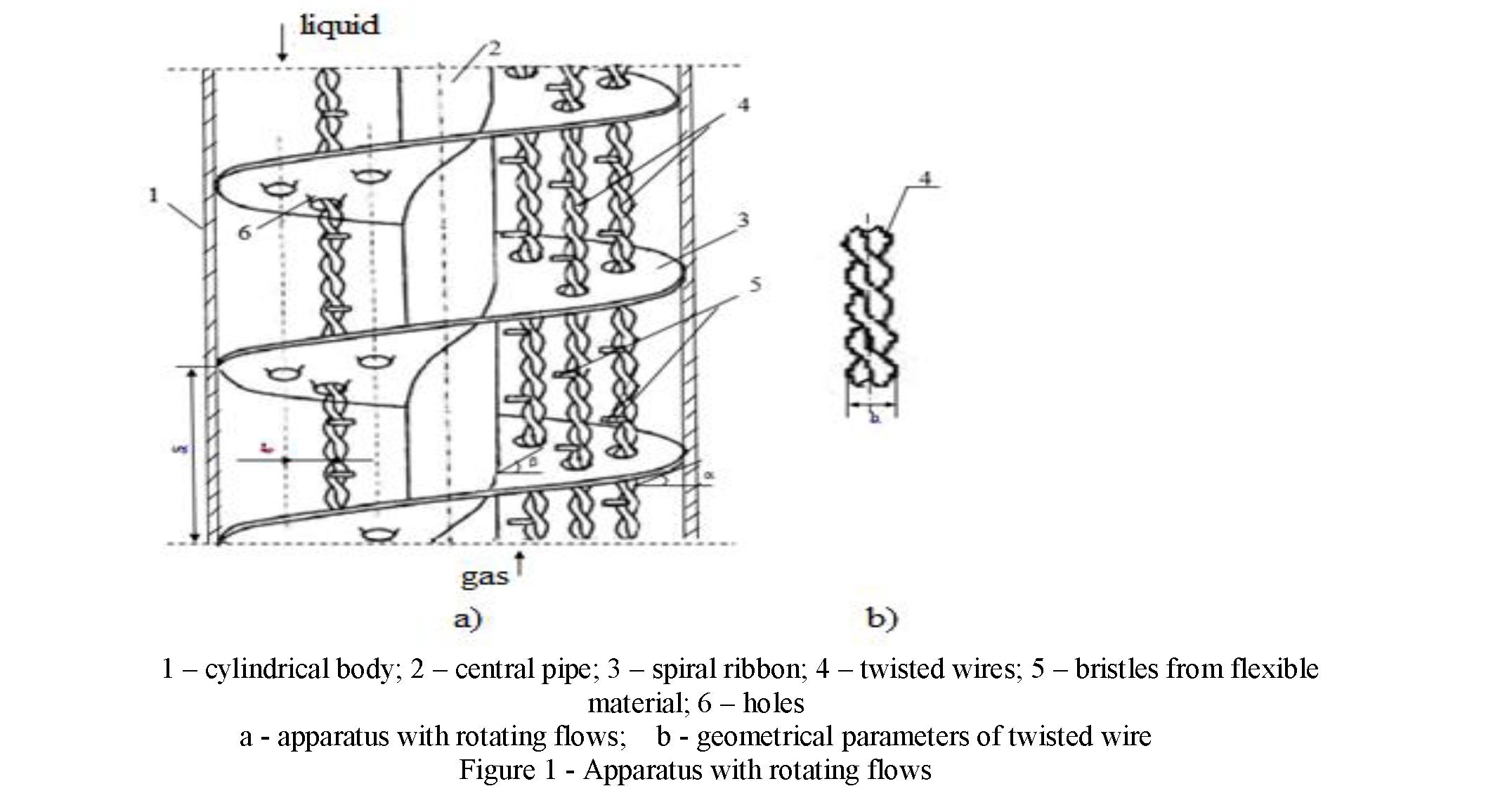Heat and mass exchange processes in the interaction of gases with liquids constitute a significant proportion of the production processes of the chemical, pharmaceutical, petrochemical and biotechnological industries. For carrying out heat and mass transfer processes, column apparatus of various designs are widely used, including apparatus with swirling gas-liquid flows.
The use of swirling currents allows to increase the turbulence of the two-phase flow, which leads to an increase in the vortex exchange, i.e. leads to an increase in the contact surface of phases, which is constantly updated. As a result, the effective values of diffusion resistance to mass transfer are reduced, which become less, than stronger the turbulent exchange in phases.
Special devices (swirlers), which give the flow a rotational component of velocity can twist gas and liquid flows. The swirlers used in practice allow the rotational component of the velocity, various combinations of axial and rotational movements of the flow to be reported to the flow, as the formation of a partial twist. In this case, the swirlers can be located both at the entrance to the channel (local twist), and along its entire length (extended swirlers). In the latter case, wire and screw swirlers, twisted ribbons, internal cutting and spiral finning are most often used [1].
The performance of devices with swirling gas-liquid flows usually increases when organizing a direct- flow scheme for the movement of the phases, however, in this case their efficiency is significantly reduced due to the short time of contacting phases, reducing the relative speed of movement of phases and insignificant moving force of the mass transfer process. Therefore, to optimize the performance and efficiency of contact devices, it is necessary to use a countercurrent-twisted phase interaction scheme.

Currently, number of high-performance and efficient heat and mass transfer devices with twisting elements have been created. This is achieved by a developed phase contact surface, high turbulization of gas-liquid flows with a relatively low hydraulic resistance. The advantages of devices with twisting elements can also be attributed to an increase in gas and fluid loads due to the organization of interaction of phases in the field of centrifugal forces.
The device contains cylindrical body 1, central tube 2, spiral tape 3, twisted wires 4, bristles of flexible material 5. The spiral tape has holes 6 [2].
The apparatus works as follows. The liquid enters from above and through holes 6 is fed to the twisted wires 4 with bristles of flexible material 5. The gas enters from the bottom of the apparatus and moves upwards through the screw channel formed by the cylindrical body 1 and spiral tape 3, splashing part of the liquid film from the twisted wires and bristles. Moreover, part of the liquid sprayed from the bristles is distributed at some distance from the twisted wires, which ensures uniform distribution of the liquid throughout the entire volume of the apparatus. The rest of the liquid flows to the back side of the twisted wires, providing flow of liquid to disperse the next step of the twisted wires and bristles. The dispersed liquid is separated in the field of centrifugal forces when striking walls of the apparatus or twisted wires, flows to the center on the inclined surface of the spiral tape and falls into holes6 with the edges bent down and inserted with twisted wires. Where the water seal is formed due to change in the cross-section of hole and friction of the liquid on solid surfaces.After that, the fluid again fed to the twisted wire at the lower located step of spiral tape. This is how gas-liquid interaction processes are repeated. The presence of water seal prevents the flow of part of the gas flow through the plane of spiral tape and, accordingly, premature removal of gas from contact zone, and also ensures a stable flow of fluid through spiral wire.
When flowing gas around twisted wires with bristles, jets and liquid droplets generate small-scale vortices that intensify the processes of heat and mass transfer. The bristles of flexible material when flowed around the gas under the influence of the vortex of the gas-liquid flow, will oscillate, which contributes to an increase in the rate of renewal of contact surface of phases and splashing the liquid jet from the bristles into small droplets.
Literature
- 1. Dytnersky Y. Processes and apparatuses of chemical technology. M.: Alliance. 2015. - 400 p.
- 2. Orymbetova G.E., Orymbetov E.M., Sabyrkhanov D.S. New heat and mass transfer apparatus with rotating flows// Science and education of South Kazakhstan. - Shymkent, 2006. - № 5 (54). - P.128-130.